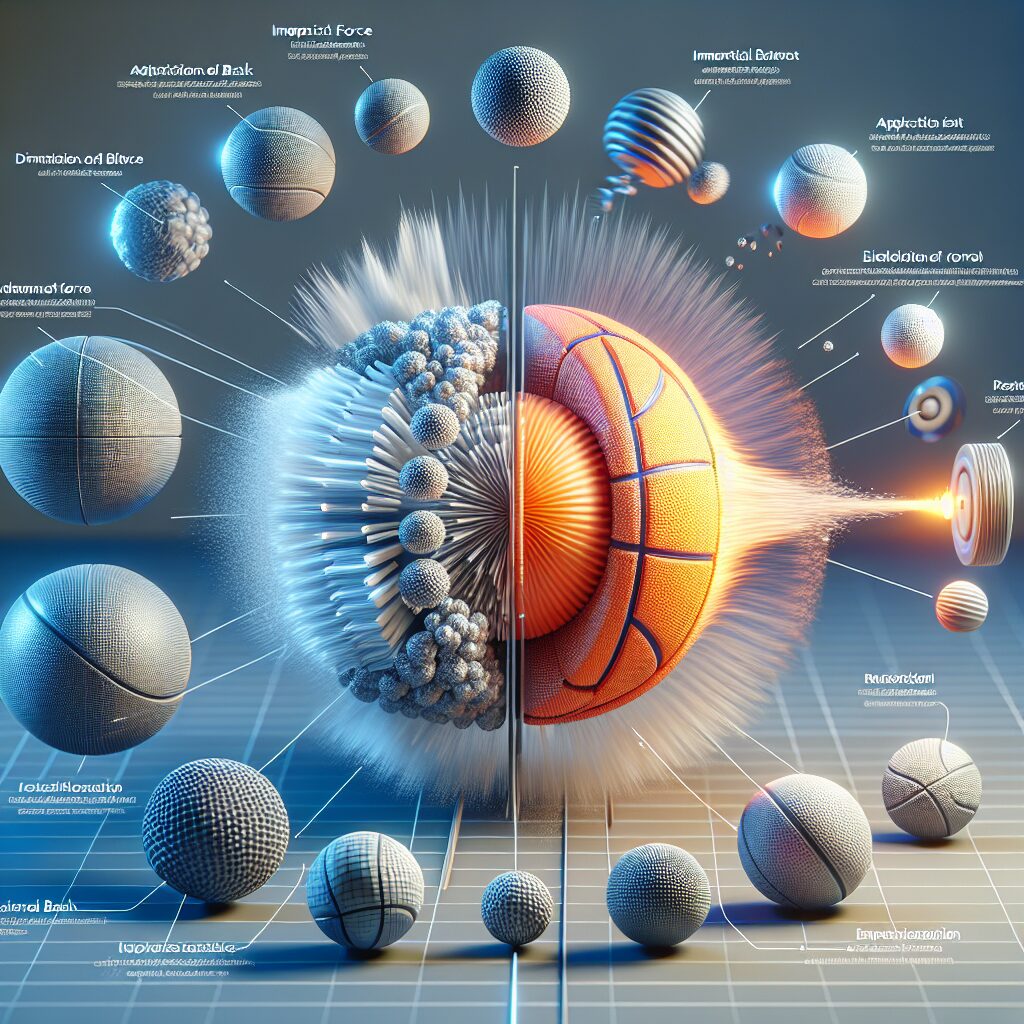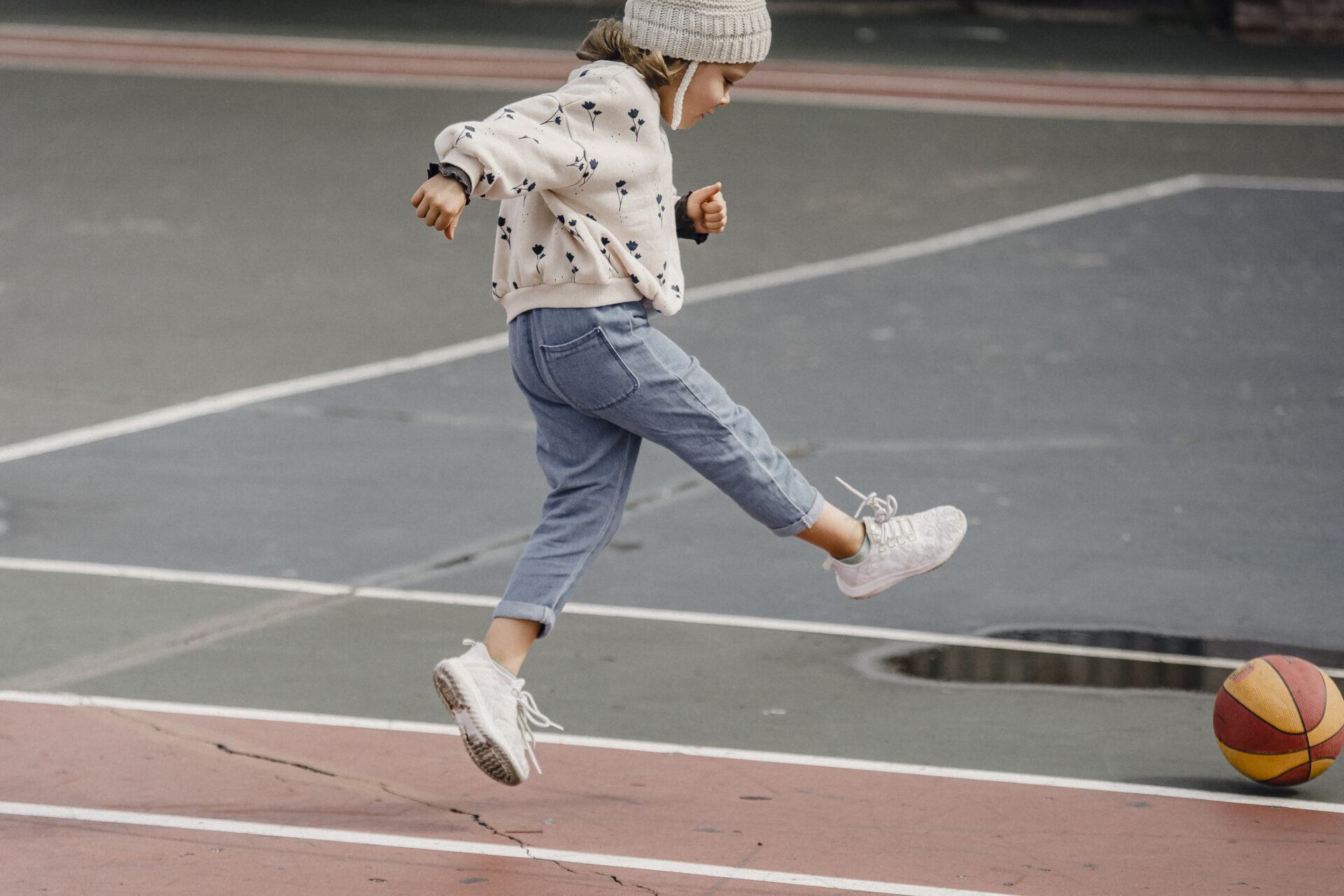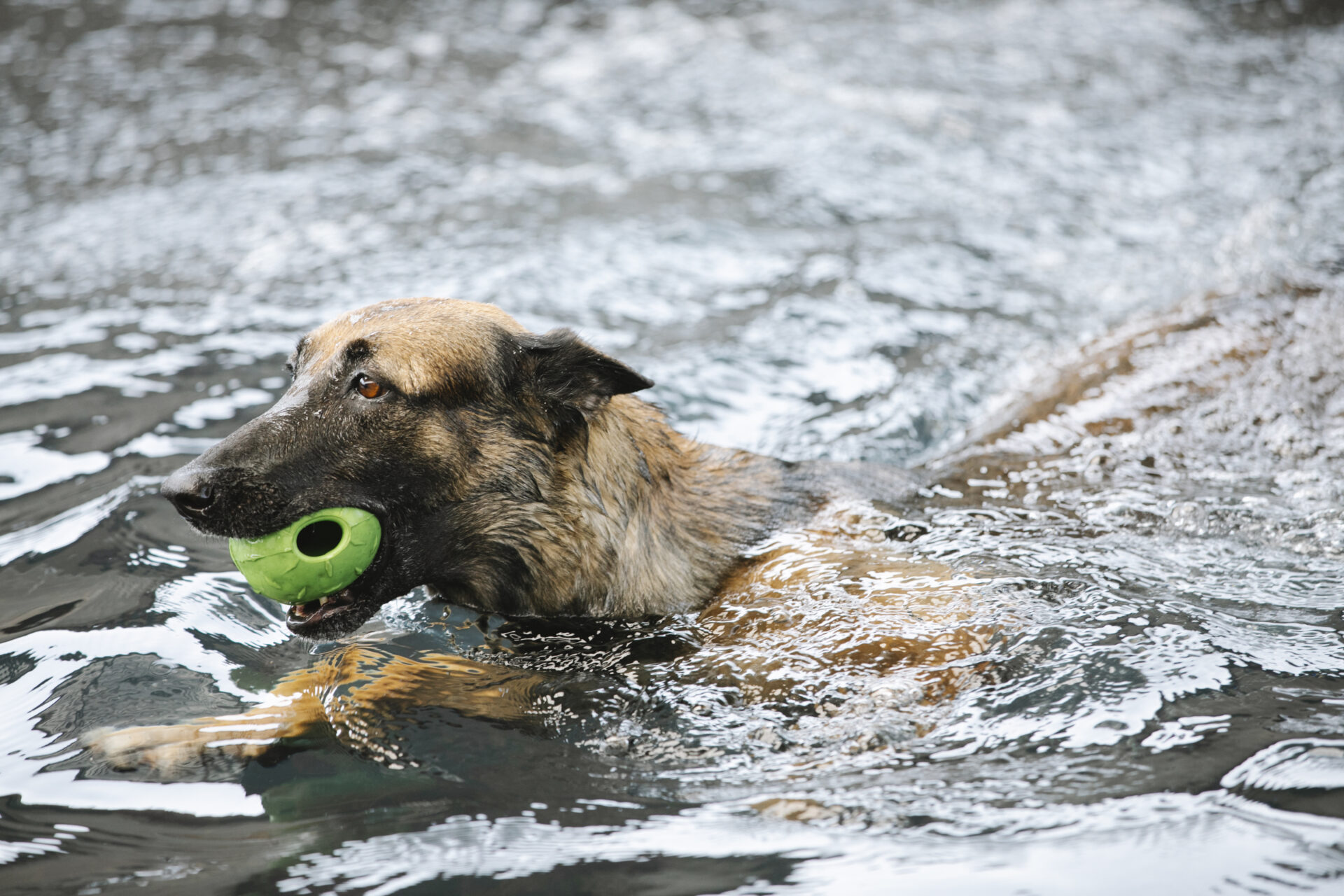Impact forces play a crucial role in understanding the dynamics of ball bounce. To put it simply, impact forces refer to the forces that are exerted on an object when it collides with another object or surface. These forces determine how a ball bounces and can vary depending on a multitude of factors such as the material of the ball, the surface it is bouncing on, and the angle and speed at which it is thrown or hit.
When it comes to ball bounce, there are some fascinating insights to consider. For instance, did you know that the nature of the collision between the ball and the surface it hits greatly affects the bounce? Whether it is an elastic or inelastic collision, the transfer of energy during the impact can dramatically influence how the ball rebounds. Additionally, the coefficient of restitution, which measures the elasticity of the colliding objects, plays a significant role in determining how high the ball will bounce.
Now that we have explored the fundamentals of impact forces and their importance in ball bounce, let’s delve deeper into the key takeaways of this article. We will be examining the factors that affect the transfer of energy during an impact, the role of elasticity in ball bounce, and the ways in which different surfaces can influence the rebound of a ball. So, grab your favorite beverage and get ready to unravel the fascinating dynamics of ball bounce!
Key Takeaways
1. Impact forces play a crucial role in the dynamics of ball bounce, affecting how the ball responds and ultimately determining its trajectory.
2. The coefficient of restitution (COR) is a measure of how elastic a ball is, representing the ratio of the ball’s outgoing speed to its incoming speed during a collision. It determines how much energy is conserved during impact.
3. The COR varies for different balls and surfaces, as it is influenced by factors such as the material, shape, and surface roughness. Harder surfaces tend to have a higher COR, resulting in a more livelier bounce.
4. The angle at which the ball strikes the surface also affects the bounce. With an oblique impact, part of the ball’s initial kinetic energy is converted to rotational energy, altering the rebound direction and reducing the bounce height.
5. Understanding and controlling impact forces can have implications ranging from improving sports equipment, optimizing ball performance, and designing surfaces with desired bounce characteristics. Exploring the complex dynamics of ball bounce has practical applications in sports, engineering, and daily life.
What are the Impact Forces: The Dynamics of Ball Bounce?
Understanding the Mechanics Behind Ball Bounce
The dynamics of ball bounce play a crucial role in various sports, physics experiments, and everyday activities. When a ball hits a surface, there are several factors that determine how it rebounds. One of the key aspects is the impact forces involved in the process.
1. Elasticity and Hooke’s Law
The elasticity of a ball is a fundamental concept in understanding ball bounce. According to Hooke’s Law, the amount of deformation a ball undergoes upon impact is directly proportional to the force applied to it. In simpler terms, the harder you throw a ball, the greater the impact force, and consequently, the higher the bounce.
2. Coefficient of Restitution
The coefficient of restitution (COR) is a measure of a ball’s bounciness. It represents the ratio of the incoming velocity to the outgoing velocity after a bounce. A perfectly elastic ball, like a superball, would have a COR of 1, meaning it would bounce back with the same velocity it had before the impact. Real-world balls, however, have COR values less than 1 due to energy losses during the impact.
3. Surface Characteristics
The surface on which a ball bounces also affects the dynamics of ball bounce. Softer surfaces tend to absorb more energy, resulting in lower rebounds, while harder surfaces provide a stronger reaction force, leading to higher bounces. Additionally, the texture and grip of the surface can influence the ball’s behavior upon impact.
4. Angle of Incidence and Rebound
The angle at which a ball hits the surface has a significant impact on its subsequent rebound. When a ball strikes the surface head-on (perpendicular angle of incidence), it generally rebounds in the same direction. However, if the angle of incidence is oblique, the ball’s direction of rebound will deviate accordingly.
5. Dampening and Energy Loss
During the impact, energy is lost due to various factors such as internal friction, air resistance, and deformation of the ball or surface. This energy loss leads to a decrease in the ball’s rebound height and velocity. Understanding these dampening mechanisms is essential when analyzing the dynamics of ball bounce.
6. Application in Sports and Physics
The principles of impact forces and ball bounce dynamics are relevant in numerous fields. In sports like basketball or tennis, players must anticipate and control the ball’s bounce to achieve their desired outcome. In physics, studying ball bounce helps explain concepts such as the conservation of momentum and energy.
Tips for Maximizing Ball Bounce Effectiveness
1. Experiment with different ball materials and hardness levels to find the ideal bounce characteristics for your specific needs.
2. Ensure the surface on which the ball will bounce is appropriate for the intended purpose. Softer surfaces for slower rebounds, and harder surfaces for higher bounces.
3. Consider the angle of incidence when throwing or striking the ball to achieve the desired rebound trajectory.
4. Regularly inspect and maintain the balls to ensure they are in optimal condition for the best possible bounce.
5. Take advantage of the physics principles behind ball bounce to improve your performance in sports or enhance your understanding of fundamental scientific concepts.
Remember, understanding the impact forces and dynamics behind ball bounce can help you optimize your interactions with balls in various settings and make the most out of this fascinating physical phenomenon.
Frequently Asked Questions
1. What are impact forces?
Impact forces refer to the amount of force exerted when two objects collide. In the context of ball bounce, it is the force experienced by the ball when it hits a surface.
2. What factors affect the impact forces in ball bounce?
Several factors influence the impact forces in ball bounce, including the mass and velocity of the ball, the nature and texture of the surface it hits, and the angle at which the ball strikes the surface.
3. How do impact forces affect ball bounce height?
The impact forces directly influence the bounce height of a ball. A greater force will result in a higher bounce, while a lower force will lead to a lower bounce height.
4. Can the angle of impact affect the rebound of the ball?
Yes, the angle of impact has a significant impact on the rebound of the ball. The angle determines the direction in which the ball will bounce and can affect both its height and distance.
5. What is coefficient of restitution?
The coefficient of restitution (COR) represents the ratio of the final velocity to the initial velocity of an object after a collision. It provides a measure of the elasticity of the collision and determines how much energy is retained or lost during impact.
6. Does the surface type affect the impact forces?
Absolutely. The surface type has a crucial role in determining impact forces. Different surfaces, such as hardwood, grass, or concrete, have varying levels of elasticity, which directly influences the rebound characteristics and impact forces experienced by the ball.
7. How does ball inflation affect impact forces?
The inflation level of a ball impacts its elasticity, which in turn affects the impact forces. Underinflated balls tend to have lower impact forces and reduced bounce, while overinflated balls may have higher impact forces but can also result in unpredictable bounces.
8. Can the temperature influence impact forces?
Yes, temperature can affect impact forces. Extreme heat or cold can alter the elasticity of the ball, leading to changes in impact forces and bounce characteristics. It is important to consider temperature conditions when studying ball bounce dynamics.
9. Are there any safety concerns related to impact forces in ball bounce?
While ball bounce is generally safe, certain factors like excessive force or inadequate surface conditions can pose a safety risk. It is essential to ensure proper playing conditions and use appropriate equipment to avoid any potential injuries.
10. How can understanding impact forces help improve sports performance?
Understanding impact forces in ball bounce allows athletes and sports enthusiasts to optimize their technique, equipment, and training. By analyzing and harnessing the dynamics of impact forces, individuals can improve their control, accuracy, and overall performance in various sports involving ball interactions.
Final Thoughts on Impact Forces: The Dynamics of Ball Bounce
The study of impact forces in ball bounce is a fascinating field that bridges physics and sports. By unraveling the intricate relationship between ball mass, velocity, surface characteristics, and angle of impact, we gain valuable insights into how these factors shape the behavior of bouncing balls.
Moreover, understanding and manipulating impact forces can have practical applications beyond sports. Engineers and designers can use this knowledge to develop more efficient and responsive materials or enhance the performance of products that rely on impact absorption or energy transfer. Ultimately, comprehending the dynamics of ball bounce empowers us to explore new possibilities and optimize our interaction with the physical world.




